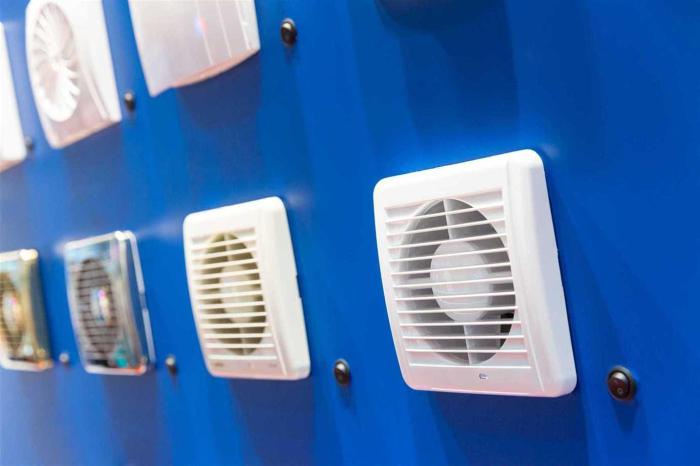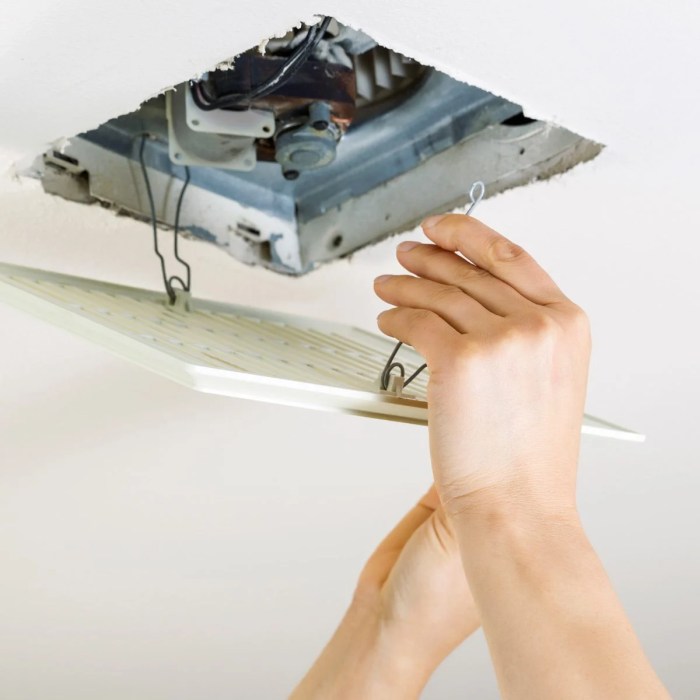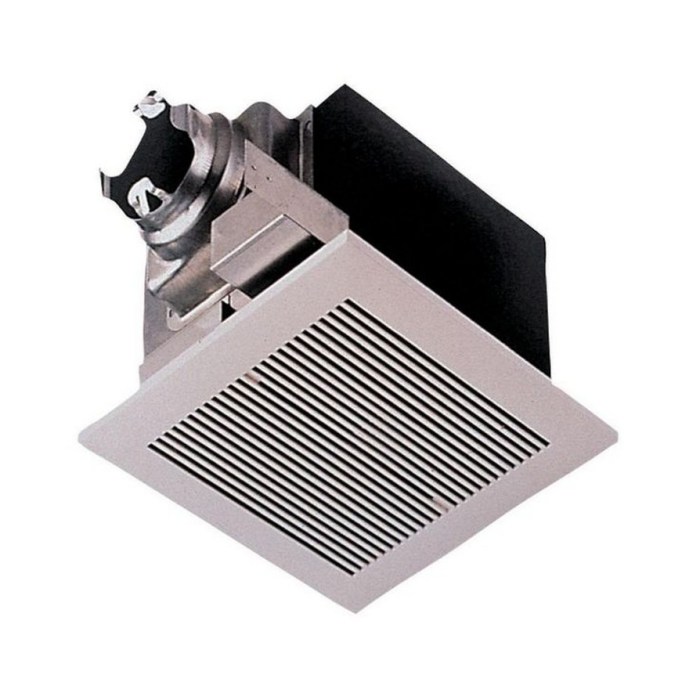Bathroom exhaust fans are essential for maintaining indoor air quality and preventing moisture buildup, but they can also contribute to energy consumption. This guide will provide you with practical tips and insights to optimize the energy efficiency of your bathroom exhaust fan, helping you save energy and improve your home’s overall comfort.
By understanding the benefits, best practices, and technological advancements in bathroom exhaust fans, you can make informed decisions to reduce energy consumption while ensuring a healthy and comfortable bathroom environment.
Energy-Saving Benefits of Bathroom Exhaust Fans
Bathroom exhaust fans are designed to remove excess moisture and odors from bathrooms, improving indoor air quality and preventing the growth of mold and mildew. By efficiently ventilating bathrooms, exhaust fans can also contribute to energy savings.
Studies have shown that using bathroom exhaust fans can reduce energy consumption by up to 10%. This is because exhaust fans help to regulate the temperature and humidity levels in bathrooms, reducing the need for heating or cooling systems to work harder.
Impact on Indoor Air Quality and Energy Consumption
Exhaust fans play a crucial role in maintaining good indoor air quality in bathrooms. They remove moisture and odors, which can contain harmful pollutants and allergens. By improving air quality, exhaust fans can help reduce the risk of respiratory problems and other health issues.
This can indirectly lead to energy savings, as healthier occupants are less likely to need medical attention or miss work due to illness, resulting in reduced energy consumption for healthcare and transportation.
Best Practices for Using Bathroom Exhaust Fans
Implementing effective practices for using bathroom exhaust fans can significantly enhance their energy-saving capabilities. This section explores the optimal strategies for operating exhaust fans to maximize their efficiency and reduce energy consumption.
Establishing clear guidelines for when and how long to use exhaust fans is crucial. Exhaust fans should be turned on when moisture-producing activities occur, such as showering, bathing, or cooking. The fan should remain on for approximately 15-20 minutes after the activity has ceased to ensure proper ventilation and moisture removal.
Optimal Placement for Maximum Efficiency
The optimal placement of exhaust fans is essential for maximizing their effectiveness. Exhaust fans should be positioned directly above the moisture source, such as the shower or bathtub, to capture and remove moisture efficiently. Additionally, installing exhaust fans in multiple locations within the bathroom can provide better ventilation and prevent moisture buildup in different areas.
Maintaining Exhaust Fans for Optimal Performance
Regular maintenance of exhaust fans is essential to ensure their optimal performance. Periodic cleaning of the fan blades and housing can remove dust and debris that can impede airflow. Additionally, checking and replacing the fan motor if necessary can prevent breakdowns and ensure continuous operation.
Comparison of Different Types of Bathroom Exhaust Fans
Bathroom exhaust fans come in various types, each with unique features, energy consumption rates, and costs. Understanding the differences can help you select the most energy-efficient fan for your specific bathroom needs.
Energy Consumption and Features
The following table compares the energy consumption, features, and costs of different types of bathroom exhaust fans:| Type | Energy Consumption | Features | Cost ||—|—|—|—|| Axial Fans | Low | Simple design, easy to install | Low || Centrifugal Fans | Moderate | Powerful, quieter than axial fans | Moderate || Hybrid Fans | Low to moderate | Combine axial and centrifugal designs, energy-efficient | Moderate to high |
Selecting the Most Energy-Efficient Fan
When selecting a bathroom exhaust fan, consider the following factors:*
-*Bathroom size
Larger bathrooms require more powerful fans to effectively remove moisture.
-
-*Ventilation needs
If the bathroom has poor ventilation, a more powerful fan may be necessary.
-*Energy efficiency
Choose fans with Energy Star ratings or low CFM (cubic feet per minute) ratings.
-*Noise level
Consider the noise level of the fan, especially if it will be used in a frequently used bathroom.
Case Studies of Energy-Saving Bathroom Exhaust Fan Installations

Numerous real-world examples showcase the successful implementation of energy-saving bathroom exhaust fans, resulting in significant energy consumption reductions.
Successful Case Study: Residential Installation
In a residential home, an outdated exhaust fan consumed approximately 120 watts per hour. Its replacement with an Energy Star-certified model reduced energy consumption by 75%, resulting in an annual savings of $25.
Successful Case Study: Commercial Building
A commercial building upgraded its bathroom exhaust fans to high-efficiency models with motion sensors. This upgrade reduced energy consumption by 60%, translating to annual savings of over $1,000.
Factors Contributing to Success
- Proper sizing of the exhaust fan for the bathroom’s volume.
- Installation in an optimal location to maximize air circulation.
- Use of energy-efficient models with features such as motion sensors or timers.
- Regular maintenance and cleaning to ensure efficient operation.
Final Conclusion
Incorporating these energy-saving tips for using bathroom exhaust fans can significantly reduce energy consumption, improve indoor air quality, and enhance the overall comfort of your bathroom. By following the best practices, leveraging technological advancements, and making simple DIY modifications, you can create a more sustainable and efficient bathroom space.


